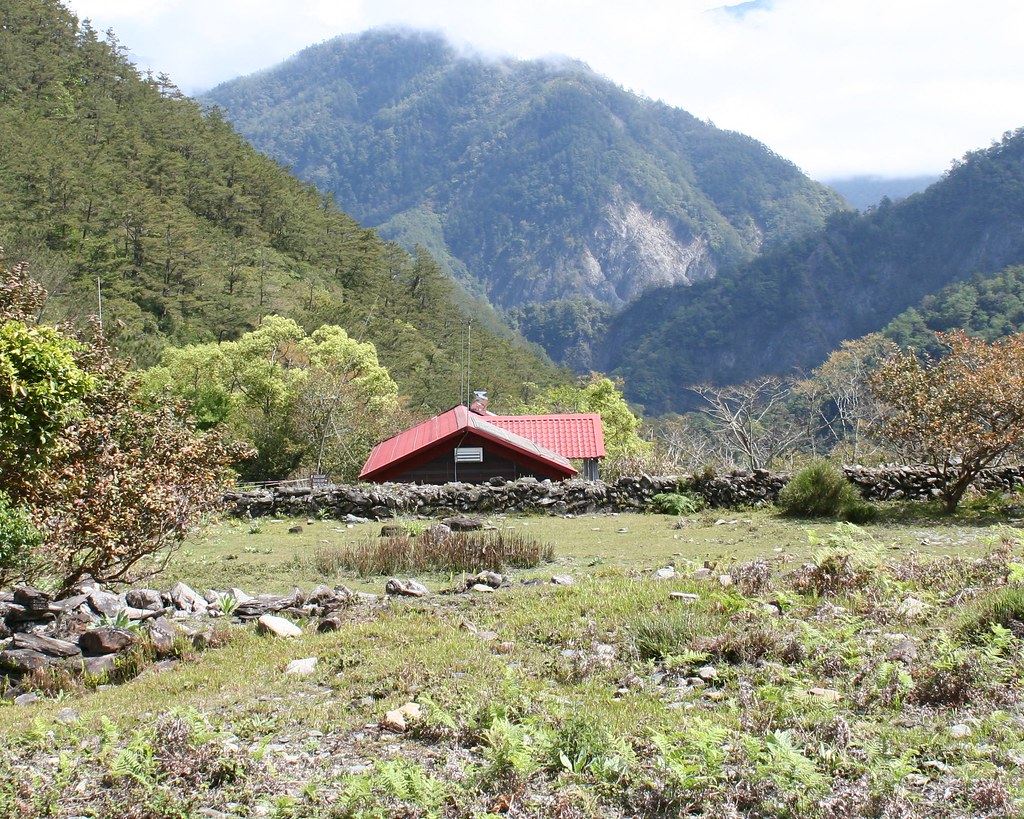
We wake up around 7am to our first really clear warm sunny day. It’s glorious outside and our surroundings, which we are seeing for the first time, are eminently kissable.
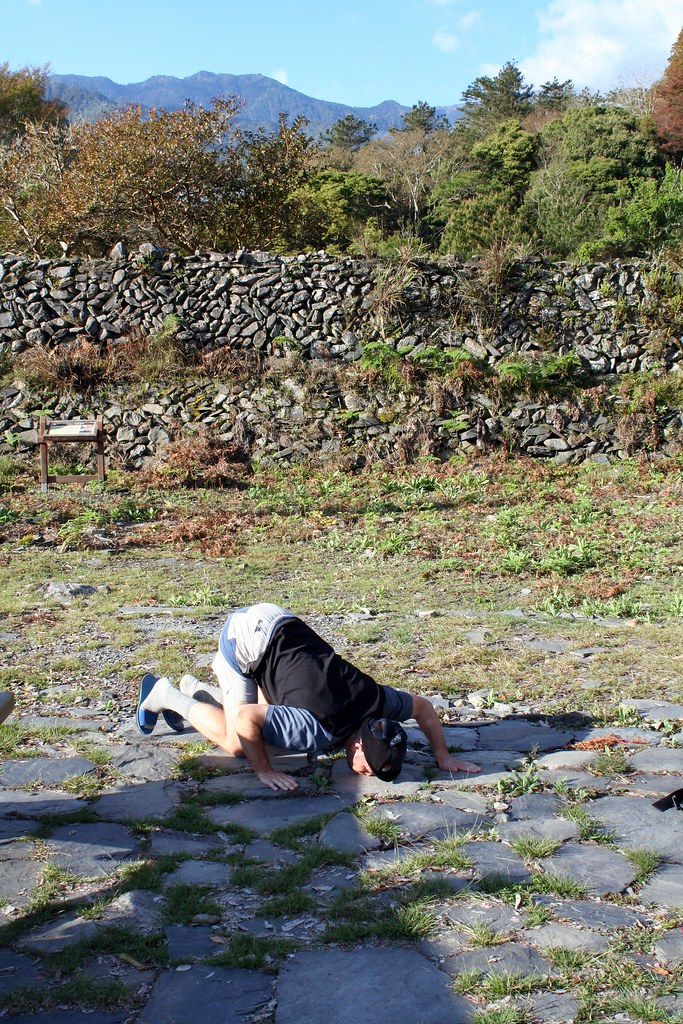
We take our time getting started, snapping pictures and drying our clothes, most of which we have been wearing wet for days.
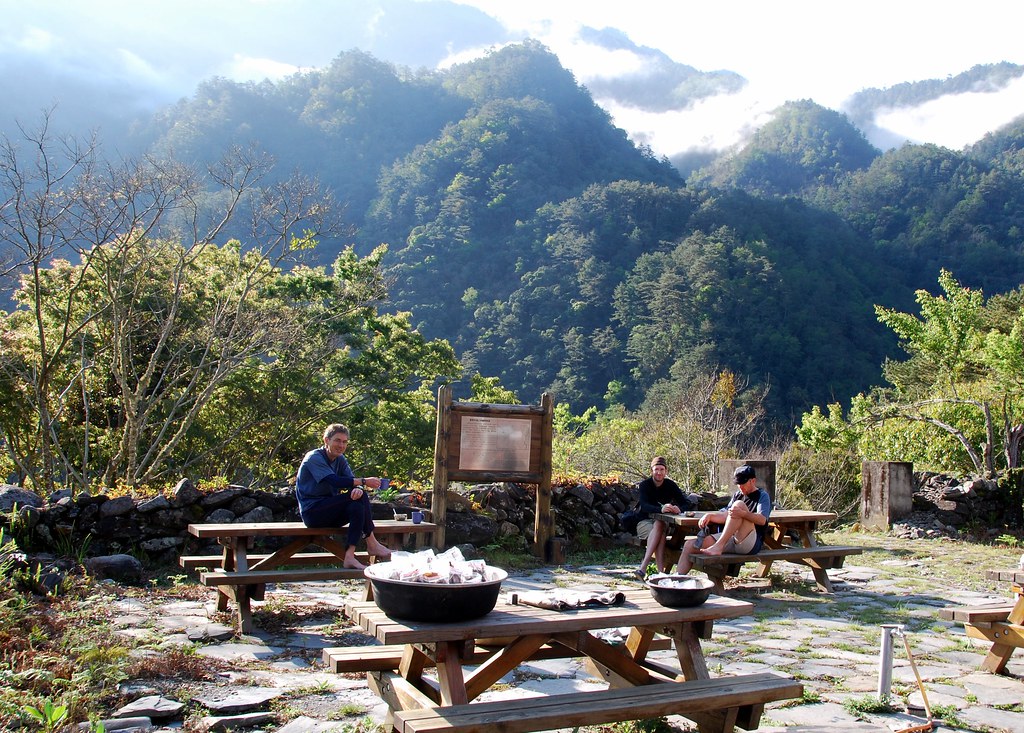
I don't usually like to post pics of me looking so stupid, but well, this is a classic. I'm sucking the moisture out of my voice recorder if you must know. And yes, it did help to make it work again.

There are many interpretative signs about the area, but to be perfectly honest I was too tired to really grasp their message at the time. But that’s what cameras and the leisurely weeks afterwards are for.
So here is the skinny. Dafen comes from the Bunun Dahun (or Tahun) which means steam. The steam in question originates from hot springs along the Laku Laku River (which Dafen sits above on terraced levels). I don’t know if the springs remain but that is something I will check out next time I am in the area. I’m a big fan of wild hot springs.
In 1911, the Japanese built a garrison at Dafen. In 1915, probably as a result of the hated policy of confiscating weapons, the Ta-Hun Event broke out and the garrison was destroyed by the Bunun. I believe this monument is to the event:
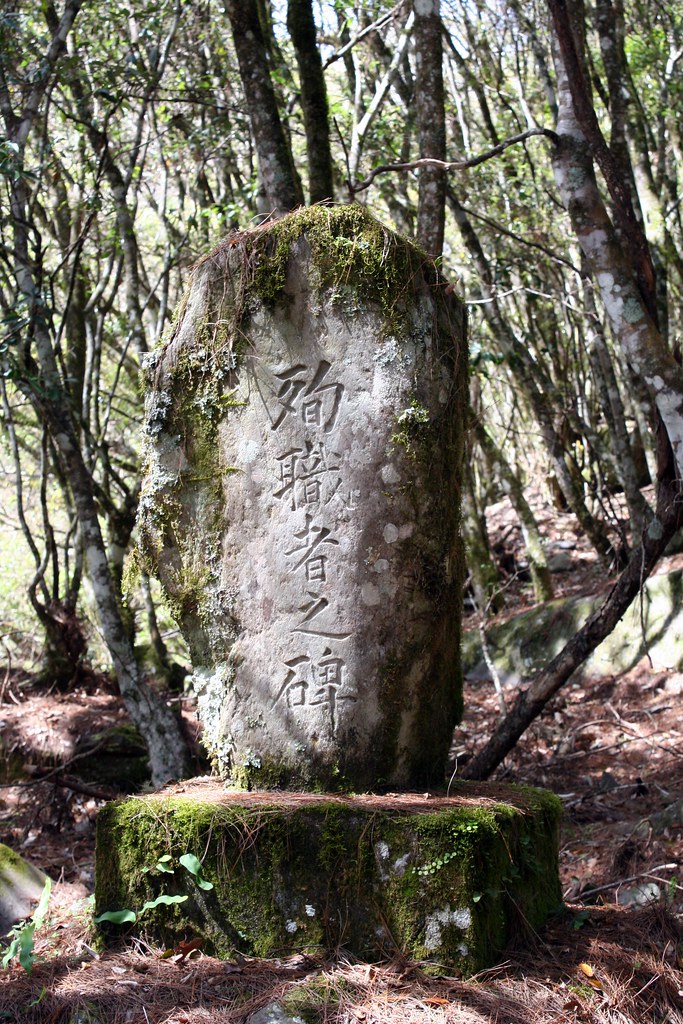
In 1920, during the construction of the Batongguan Traversing Route, the garrison was rebuilt, this time into a major stronghold. It became in fact the most fortified station along the eastern Batongguan. Not much is left now.
As I mentioned yesterday, Dafen had a general store, and various halls. Itinerant doctors and dentists paid frequent visits, as did acting and singing troupes, and even hikers. There were two schools: one for Japanese children and one for aboriginal. There are still aboriginal elders alive today who attended that school.
The modern day grad students at Dafen had long headed out to do research by the time we got up, but they’d nicely left bags of scat and leaves drying on the picnic tables.

It’s around 10am when we leave the cabin. The original path out of Dafen was destroyed years ago so we have to climb a series of switchback 800m (4.5 hours) to a ridge, then descend down again to rejoin it on the other side.
We begin by crossing the Laku Laku River.
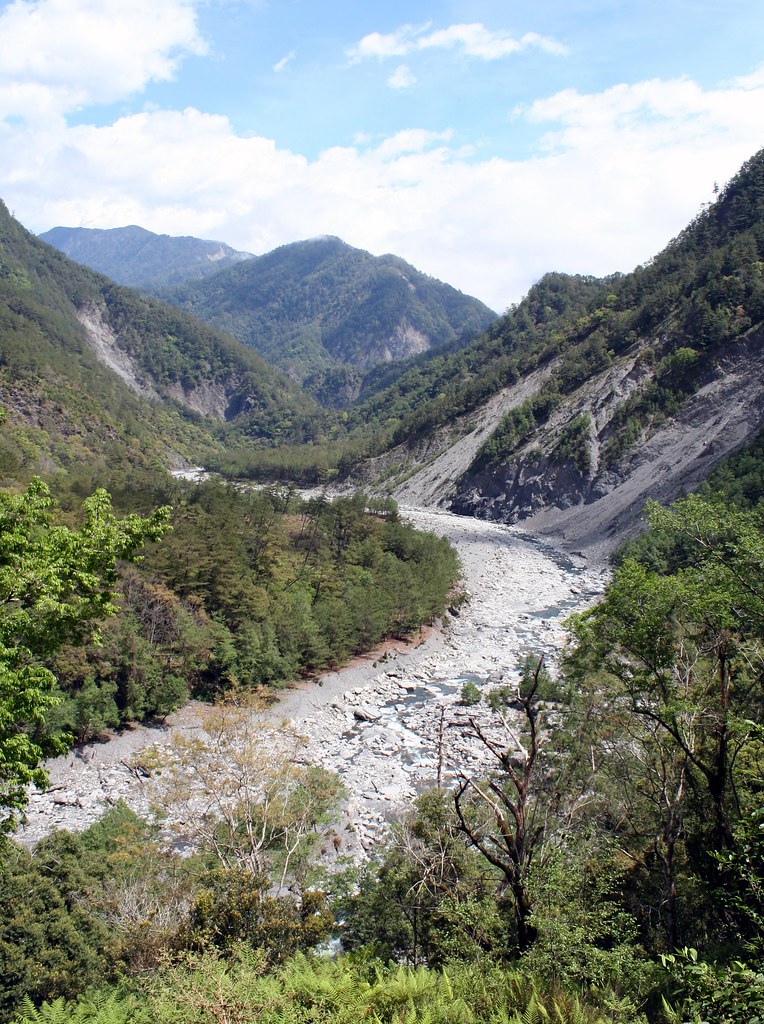
You'll probably need to click on the pic to make out Dafen cabin, now across the valley from us, looking nice and snug on the thickly forested slopes.

After crossing the river, we strike through a lovely mixed forest of oak, machilus, chalkboard tree, crape myrtle, paper mulberry and ferns of every size and shade of green.
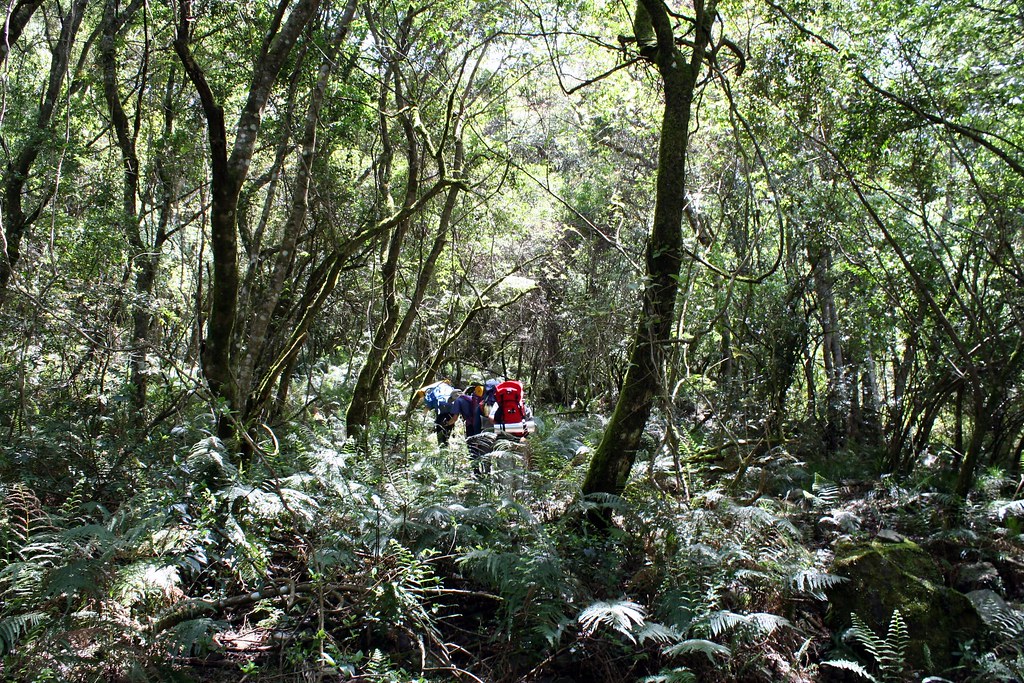
As we get up around 2000m, ancient pine and cedar start to appear (some of these trees look a thousand years old) as well as camphor. It’s an odd forest, both jungle like and coniferous. When wind stirs up leaves are blown down on us like rain.
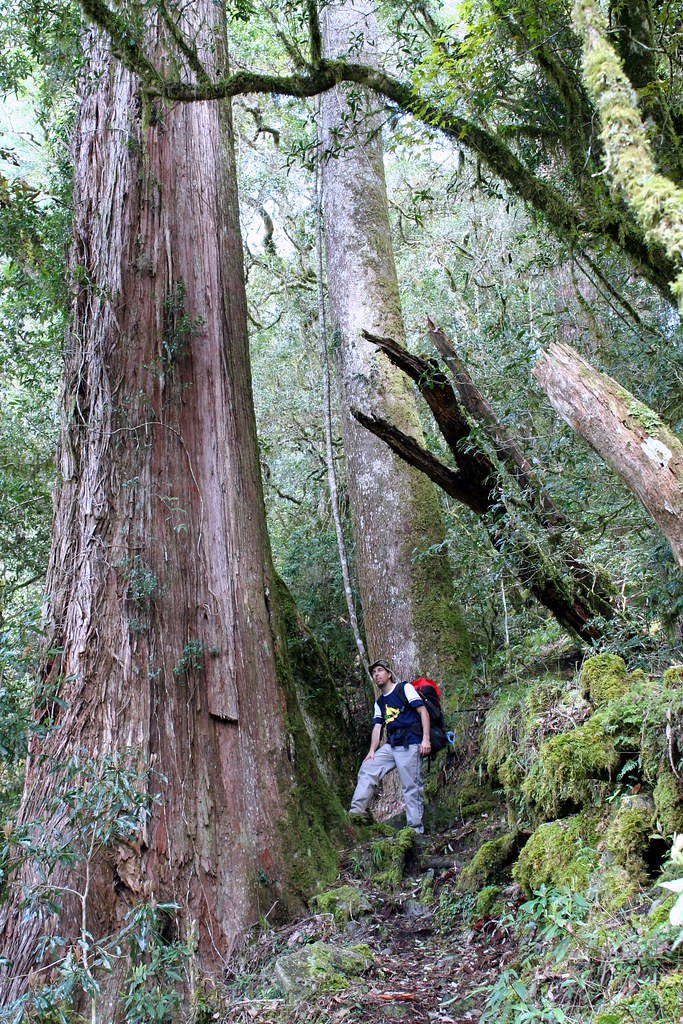
The climb up goes on for too many hours and then ultimately disappoints, as when we gain the ridge there is no view. One simply crosses a narrow saddle, covered in lush rainforest, and then immediately begins to descend.
We have lunch on the saddle, and are treated to some lovely light shows, including a rare Brocken Spectre. (I thought everyone was saying Brock Inspector and thought up a tale of a superhero with special solar powers called Inspector Brock).
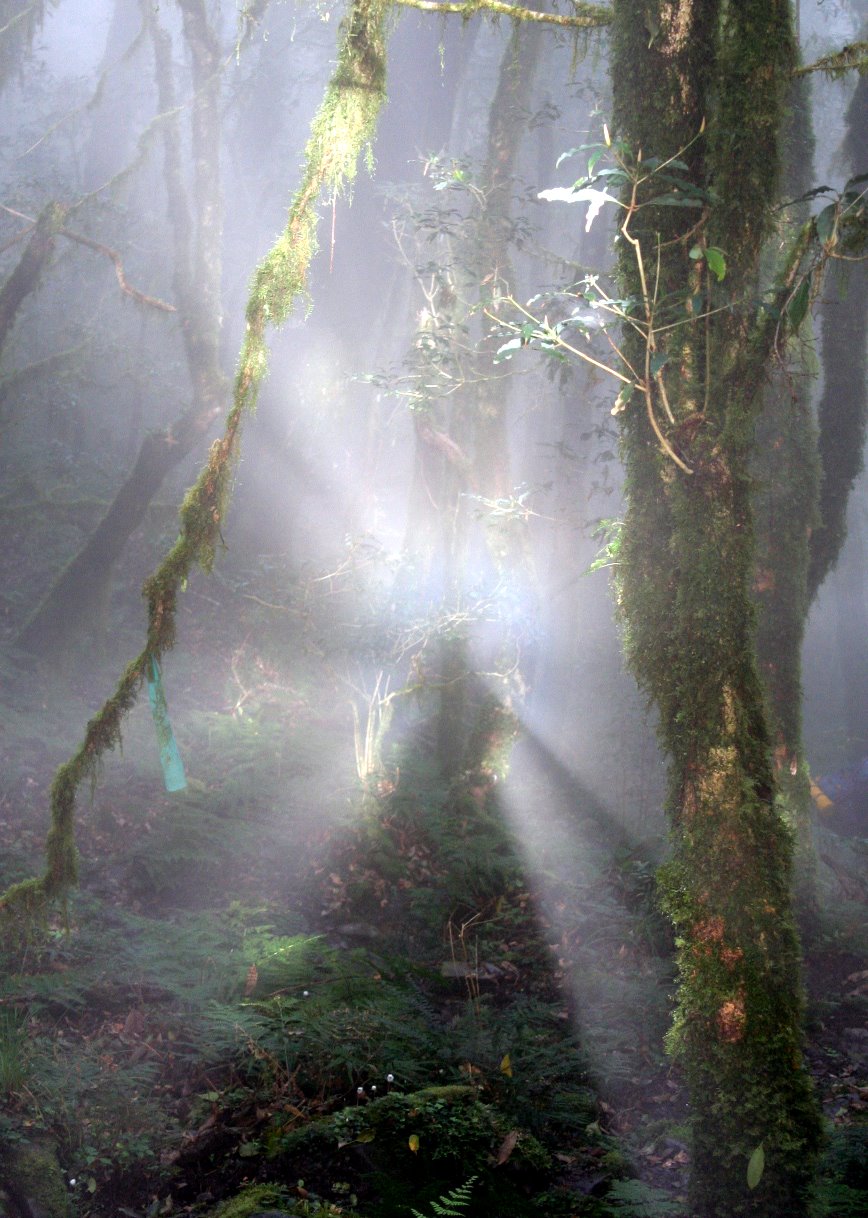
But a Brocken Spectre is light phenomenon which enables you to see your shadow in a wall of fog in the distance with a rainbow or colored aura around it.
The Brocken, also called Blocksberg, is the highest peak (3,747ft, 1,142m) in the Harz mountains. This range is eight miles southwest of Wernigerode, Germany.
The Brocken Spectre, also called the Brocken Bow or Glory Ring, is produced by a low sun, casting silhouettes on the fog surrounding the mountain peak. Often these shadows have rings of light surrounding them (due to moisture in the air) which are similar to auras. This phenomena has given the Brocken a mystical significance in German folklore.
Due to magic connotations and stories surrounding the Brocken, witches began to celebrate the sabbath (April 30/ May 1st) midnight rituals there. The mountain even has a witches’ altar and devil's pulpit.
Descendants of the Brocken are known to have a sixth sense. They also possess the ability to feel poltergeists and perceive emotions in others. Equally sensitive to their powers, most are quiet about these abilities.
Goethe also made a trek to the Brocken in 1777 and the trail he took is now a tourist attraction. There is also a scene in Faust that occurs on the Brocken.
After a short climb down a steep, muddy trail, we reach the original Batongguan path, which continues in great shape from here to Baoyai cabin, an easy 3 hours walk. This is one of my favorite parts of the trail, and one where the fog really builds on the rich history of the surroundings. There are several ruins of old police stations running alongside the trail (the best at Duo Meili) and numerous suspension bridges, some long enough that we can’t see across in the fog.
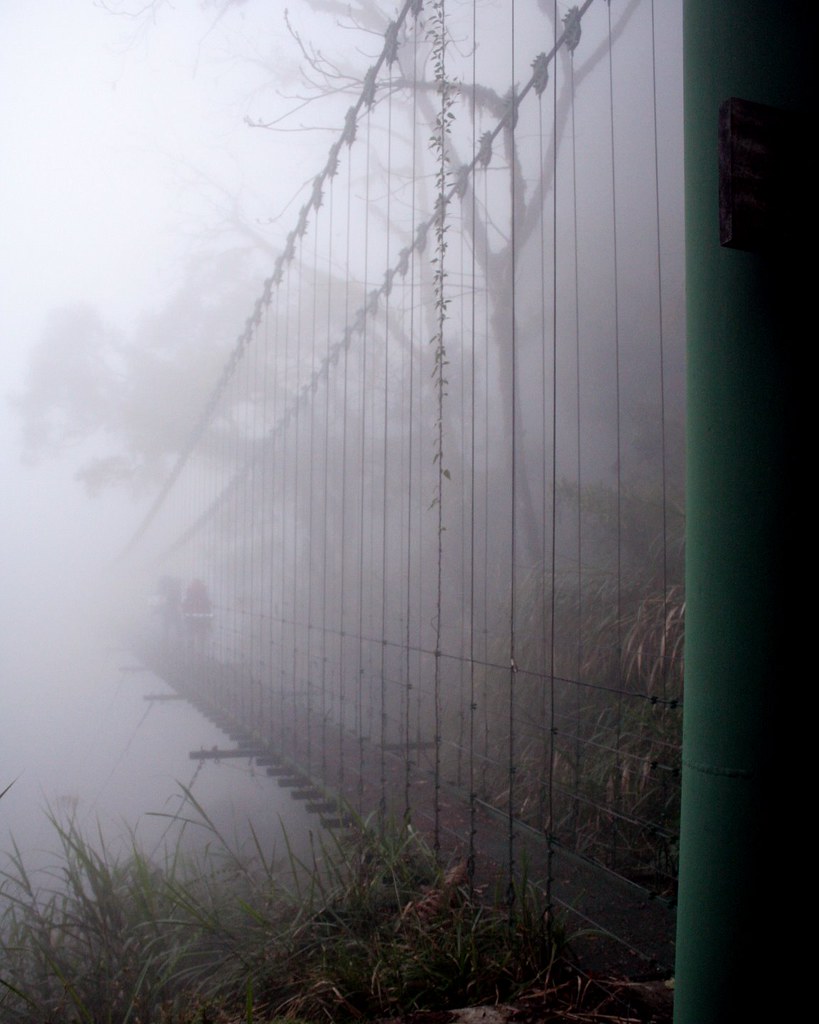
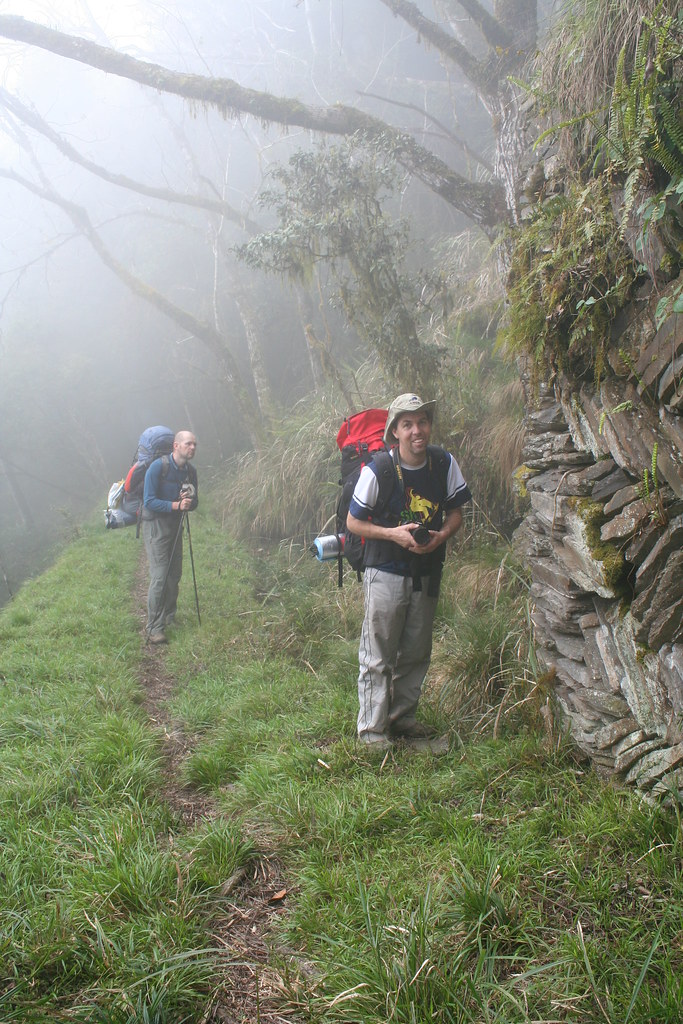

Baoyai (elevation 1680m) is a simple cramped cabin set on a small flat tract of grassland on the slopes above a tributary to the Laku Laku River. Stephen and I arrive just as it is getting dark.

I didn’t think it was possible, but my legs and body are even sorer today than yesterday. I can barely sit. It’s worse than when I jogged 20 miles once without any special training. I’m so stiff I’m not sure if I will break or just freeze up. Every movement causes me to groan.
We are alone this night in the cabin. In fact, we haven’t seen a soul on the trail since Jhongyang. We eat as much of our dinner foods as we can, knowing the next day we will hike all the way to the trail end.
At night there is the clearest sky imaginable overhead. The Big Dipper is low on the horizon and Cassiopeia high above me. In between the constellations are so filled with bright minor stars I can’t make many of them out.
I sleep fairly well this night. I think my companions are just too exhausted to waste energy snoring.
Click here for Day Seven.
Practicalities:
The day’s hike is around 7.5 hours. There is water in the first hour but then nothing for the next 4 hours. After crossing the saddle, and descending to the old trail, there are small streams every hour or so to Baoyai. The cabin has flush toilets (including one in the cabin) and a steady supply of water.

No comments:
Post a Comment